- Home
- Various Articles - Teaching different age groups
- Silver Learners - Teaching 50+. Elements of the Learning Process
Silver Learners - Teaching 50+. Elements of the Learning Process
Małgorzata Szwaj, EFL teacher and teacher trainer with extensive classroom experience, materials development, staff training, curriculum design, and European projects management with her professional career spanning years of working for the University of Gdańsk and private educational institutions in Poland ( English Unlimited and International College). Member of Pilgrims International Team of Trainers and the co-author of the Polish edition of Cambridge English for Polish Schools (CUP). She has been coordinating many European Union projects promoting Lifelong Learning and was Coordinator of Teaching Adults Online – an Erasmus Plus project dedicated to educators of senior learners. (m.szwaj@icollege.com.pl)
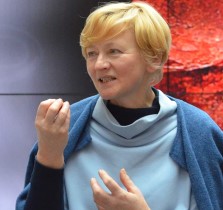

Introduction
Senior learners are the only natural resource in Europe that is…. growing fast. Surprisingly, the potential of this phenomenon and its impact on educational policies is still largely underestimated. The following article outlines basic concepts related to the issue of learning at a later stage in life and gives some practical suggestions for educators of this age group. It is a part of a comprehensive Guide (Training Adults Online Guide ) for educators of mature learners, created by partners of an Erasmus Plus project – Training Adults Online (http://www.tao.eu.com.pl/)
Focus on the learner
Learners 50+, 60+, 70+, 80+ - a rich and diverse picture
Getting old is a very long period of change in life and, as a consequence, people from 50+ to 90 + are an extremely heterogeneous group. So diverse are their cognitive abilities, levels of economic, social and physical independence, and socio-cultural differences that, despite numerous and ongoing attempts to classify them into meaningful subgroups, the researchers have not been able to do it. Terms such as - middle adulthood, later adulthood and old age are often used interchangeably. In this article, I am going to use terms like: older adults, senior learners, mature learners or silver learners because all of them may meet in the same group when learning something new regardless of their chronological age.
Peter Laslett (1915-2001) was a British historian who established in 1987 a very positive ageing theory of one's life comprising four ages, where the Third Age represents an era for personal achievement and fulfilment after retirement with health, vigour and positive attitudes. Yet the true picture, painted by socio-cultural reality, is very diverse. There are mature learners able to pursue their personal development in line with Laslett’s vision but there are others struggling to make ends meet because of digital illiteracy, unemployment, low levels of confidence or poor health. Both groups, and the vast majority in the middle, can benefit from the programme of lifelong learning, non-formal or informal, provided they are assisted by trainers and educators of older adults who are able to meet their diverse needs.
It is neither reliable nor fruitful to categorise people and especially if they belong to a heterogeneous group of the “Third Age”. Their learning outcomes may be influenced by different factors just as people themselves may differ due to many reasons. Educators need to bear in mind that if lifelong learning is to act as a transition process to greater independence and fulfilment, one needs to accept and respect differences among learners - their social and cultural context, learning history and habits as well as motivation and self-image.
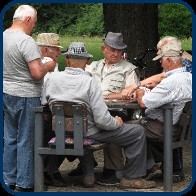
A short historical perspective on adult learning theories
Adult learning goes back in history. Ancient civilizations paved the way for medieval universities, but it was not until the 17th century, that a Czech philosopher John Amos Comenius published his work – Pampaedia – where he advocated eight types of schools for eight periods in life, including old age. He created a vision of universal education “without limits” until the last moments of everyone’s life. By creating his concept of education until the old age, Comenius became the forerunner of geragogy ( the study of growing older and the old age ) and is often considered the father of modern education. He was followed by the outstanding work of Danish N.F.S. Grundtvig, who in the 19th century created the concept of folk high schools, open to everyone, regardless of age and previous schooling. By the beginning of the 20th century it was clear that a new age in education was dawning when an American educational philosopher, E.C. Lindeman, published his views on democratic adult education and lifelong learning, thus giving a rise to the new era in which modern values of adult education were born. His quotation "...the approach to adult education will be via the route of situations, not subjects…" still applies.
A disciple of Lindeman, Malcolm Knowles, building on his philosophy of adult education extended it and developed further. He was convinced that adults learn differently to children and this led, through research and inquiry, to formulating critical assumptions about adult learning:
- Self-concept: Adults are internally motivated and self-directed
- Experience: Adults bring life experience to every learning experience
- Readiness to learn. Adults are goal oriented
- Orientation to learning. Adults are relevance oriented
- Motivation to learn: Adults are practical
- Respect: Adult learners like to be respected and treated as adults with experience and expertise
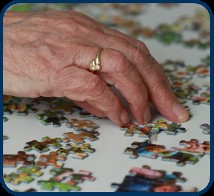
These assumptions were further developed into a Theory of Andragogy, which became a focal point of reference for discussing the characteristics of adult learners in the 20th century.
Other theories of adult learning, which grew at that time and made a major contribution to present methods of working with adults and senior learners, are Experiential Learning and Transformational Learning. The former is defined as the process of learning through experience and learning through reflection on doing. D.A. Kolb combined the process of learning with reflection through the four stages:
- concrete experience
- reflective observation
- abstract conceptualization
- active experimentation
Later on, his followers created a simple, practical questioning model -"5 Questions"- for facilitators to use to encourage critical reflection in learning:
Did you notice? Why did that happen? Does that happen in life? Why does that happen? How can you use that?
These questions are asked after a learning experience and lead the group to better understanding of how they can apply the learning to their own lives.
Transformational learning (J. Mezirow) is another recent theory of learning which says that the process of learning or transformation has three dimensions: psychological (changes in understanding of the self), convictional (revision of belief systems), and behavioural (changes in lifestyle). This theory puts a lot of emphasis on the role of the educator who can promote discovery learning through classroom methods such as learning contracts, group projects, role play, case studies, and simulations because these methods can help learners see the new knowledge in the context of their lives.
All three theories – Andragogy, Experiential Learning and Transformational Learning - together with other new developments in modern educational psychology have practical and unique implications on the work of educators with senior adults.
If you want to read more about adult learning theories, you can study the following links:
https://www.mindflash.com/elearning/adult-learning-theories
https://www.td.org/insights/3-adult-learning-theories-every-e-learning-designer-must-know
Geragogy – basic principles
In simple terms, Geragogy is the method and practice of educating older adults. Geragogy does not aim to be a separate educational theory. It is more of a field of educational research and practice focused on learning styles of older adults, which recognises how age-related issues may affect learning. It also stresses a different role that older adults play in designing the content of learning.
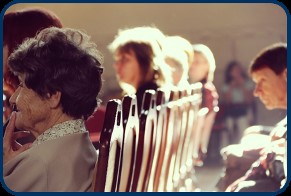
- The Principles of Practical Geragogy, which borrow from adult learning theories and practice, can be summarized in the following points:
- Learning courses need to provide skills and resources, which aim to maintain personal independence for older learners.
- Outcomes of learning should be practical and presented before a course of study begins and any assigned tasks must have meaning for older adults.
- The desirable routes to learning are through enjoyment, curiosity, seeking information and desiring communication
- Variety in teaching methods is required as well as a flexible, interdisciplinary approach which responds to the needs of the learners.
- Educators need to have a clear focus on the topic and limit the number of ideas presented. Complicated and lengthy lectures should be avoided.
- Tutors’ role is to encourage learning and participation with respect, warmth, positive feedback, and connect the new knowledge approval and encouragement.
- Older learners may take longer to complete tasks and assignments than younger people. They may also wish to return repeatedly to a task until they feel comfortable.
- Examples and new skills should be reinforced regularly and often but using different contexts in order to give as many opportunities as possible for learners to understand an idea.
- The past experiences of learners can be useful in helping them understand and connect the new knowledge to their experience.
- Educators need to help learners use their creativity and build on their personal life experience. It is also important to combine and review the new knowledge with the information that may have been learned in the past.
- Older learners need to be co-authors of the learning programme.
- The 21st century changes in educational psychology have created the concept of Critical Geragogy, which is a framework for revising social and educational principles of geragogy and questioning the social preconceptions about ageing. It also challenges the role assigned to the older generation in a society and puts emphasis on working with learners’ negative self-image and lowered expectations concerning their goals.
You may want to read more about Geragogy by going to this link:
https://en.wikipedia.org/wiki/Geragogy
Truths and myths about cognitive ageing and learning
Older adults face many challenges when they find themselves in a classroom again. Some of these challenges are related to cognition, some have a psychological background (challenge to their independence and self-control or bad experience of their own school days) and some have roots in the social attitude to learning at a later stage in life. We need to be aware of these challenges, but - what’s more important – accept them as natural environment to late lifelong learning which can be worked on and improved.
In some societies, certain preconceptions of ageing, still firmly rooted in the social attitude to the potential of the older generation, are mainly about – decline. One of these preconceptions suggests that age-related transformation is often considered to be a barrier to achieving learning goals. This belief is based on well-known symptoms of ageing such as problems with memory, sight, hearing, difficulty to stay focused, and other physical constraints related to long-term illnesses. In other words: “You can’t teach an old dog new tricks. “
However, research says the opposite. According to findings in neuropsychology, cognitive abilities change with age, but the process of change does not always bring decline. Learning involves two types of cognitive abilities - crystallized and fluid abilities.
1 Crystallized abilities
Crystallized abilities are the skills and memories that result from learning things in the past, typically in the form of general knowledge. Tests of general knowledge, understanding text, solving cognitive tasks, vocabulary etc. reflect crystallized abilities. Studies have shown that there is an improvement in crystallized abilities until approximately the age of 60 followed by a plateau until the age of 80.

2 Fluid abilities
Fluid abilities refer to the process of learning (memory retention, speed of learning, ability to solve new problems, using logic in new situations, identifying patterns etc.) and scientists have noticed steady decline in fluid abilities from the age of 20.
There is a metaphor, which can summarize the role of both types of abilities. We can look at the brain as a computer where its hardware (memory and speed of processing) are declining with age, but the software (knowledge and experience) can – thankfully - grow. And the saying - “One is never too old to learn” is undoubtedly true.
If you want to read more about cognitive ageing and learning, please study this link:
https://www.intechopen.com/books/geriatrics-health/cognitive-ageing
Challenges to learning at a later age and educational implications
We know nowadays that brain development may occur throughout our lifespan and learning is possible at any age. However, learning at a later stage in life takes place in a different context from that of a younger generation. The context is marked by personal learning history and habits, the emotional attitude to learning resulting from one’s learning history, highly individual experience of one’s social role and expectations related to it, and the state of one’s health in general and cognitive abilities. All of them have practical educational implications.
One must be realistic about the facts of life, such as the changes in perception, as we grow old. The following physical and cognitive changes may affect and the older generation:
- limited vision
- impaired hearing
- moving with difficulty
- diminished working memory
- slower processing of information
- difficulty to stay focused
- problems with selective and divided attention
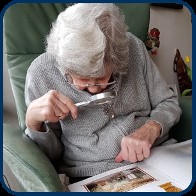
For some older learners these physical constraints become major external stumbling blocks which deter them from making the effort. But alongside, or beneath these problems there may be a whole range of internal emotional issues which have their roots in individual learning histories and life experiences such as:
- lack of confidence
- pride and not being used to the role of a learner
- fear of making mistakes
- resistance to being “told what to do”, especially by young or female teachers
- low motivation, resistance to learn, feeling forced to learn
- not being able to see the benefits of learning
- low self-esteem
- negative self-image
- pressure
- social preconceptions regarding learning in old age
- feeling of incompetence
- problems in the family
The combination of physical and internal factors may be the main reason why older learners’ focus may shift away from learning or decide against it. But it does not have to be so. None of these factors, on their own or in combination, can legitimize abandoning learning. None of them are reasons enough why educators and trainers would not be able to help older learners achieve their learning goals. For instance, older learners get frustrated because they have problems remembering new words in a foreign language class and blame themselves for having bad memory (“I'm too old for learning, my memory has gone so bad”). In fact, the poor performance of memory may also be due to the lack of study, unclear or unhelpful learning strategies (e.g. learning by heart, learning without making meaningful associations), low self-knowledge, vague objectives or just lack of interest in the topic. The informed educator of older adults would use appropriate strategies to guide the learner complaining of poor memory to accept that memory can be practiced in many ways and other factors, such as personal relevance, may be involved.
Learning at a later age in life may be more challenging but it is, at the same time more rewarding, because it empowers older people and, ultimately, provides them with tools for combating social isolation, depression and dementia. Paraphrasing G.B Shaw, we can say:
“We don’t stop learning because we grow old, but we grow old because we stop learning”.
Motivation
“Your teacher can open the door, but you must enter by yourself.”
This Chinese proverb presents the universal challenge of motivation to learn. Both parts – teachers and learners – are involved but their roles are very different. The decision to go through the door, or not-metaphorically speaking, always lies with the learner.

The motivation to learn at a later stage in life is a combination of different factors, both internal and external. Internal motivation, according to the readings of psychology, is more meaningful, while external motivation relies on the prospect of a reward or bare necessity. Both can make a learner “enter through the door”. In other words, learners may have different reasons for wanting to take part in the course of learning, or staying outside of it, and this is why the concept of – Need - seems central to the discussion on motivation to learn at a later age.
The needs of the silver generation exist on three emotional levels:
a. the need to feel safe, on the physical, social and environmental levels
Older adults feel safe when they feel they belong and are accepted, and trainers do not try to change their views or impose their own; the feeling of safety is threatened when their autonomy is not respected, and their emotions are overlooked in the course of learning.
b. the need to be informed and understand the world around them
Many senior learners have a strong need to actively use and develop their cognitive abilities, gain technical skills and knowledge, which they could apply in daily life – the health system, savings, contacts on social media, social care, life insurance and inheritance, etc.
c. the need of feeling self-worth
Mature learners need to receive messages from other people and the society that senior citizens are important, and their knowledge and experience are valued. They need to feel that their decisions are given serious consideration and their values are respected.
Other key factors in motivation, apart from psychological needs, include beliefs, as to how older adults view themselves and their scope of abilities, their level of curiosity, attitudes they have about learning, and the ability to sustain motivation by goal setting and consistent effort.
In the shade of these positive qualities, there is a field of negative beliefs, which are counterproductive to motivation. They are part of negative cultural attitudes towards old age, preconceptions, which still exist in the background of a social dialogue about the role of older people, education and lifelong learning. King Lear’s line – “I am too old to learn” is just one famous example of this. But let us remember that beliefs about old age that people held four hundred years ago must not become our own. We, the educators and teachers, are responsible for revising our own preconceptions about ageing before we can try to share our views with older learners who doubt their own potential.
Focus on the educator
Who is an educator?
The notion of an educator, as someone different from just being a teacher, is not a new idea but it became more widely used in the later part of the twentieth century to describe someone who plays a decisive role in dealing with lifelong learning in practice. It is someone with the vision and know-how of how to approach teaching / guiding adults; especially mature, experienced adults who are learning for personal development, social and digital inclusion or in order to be still part of the job market of the fast-changing society in the twenty first century. The definitions of a mentor, guide, counsellor, facilitator, trainer etc., are all close to the central role of an educator. In short, it is a person who understands and accepts subjective needs of individual learners, is able to create a suitable curriculum and materials, and assists learners in their autonomy. This person also knows how to work with a group and involves learners / activates learners in the process.
Competences of educators
Competences of adult learning professionals are not merely “a wish list”; they are the cornerstone in any training programme and form the backbone of a guide for educators of senior learners. According to the Study financed by the European Commission (Key Competences of Adult Learning Professionals), the topic can be discussed on three levels:
A. the level of competences
B. the level of activities
C. the level of context
Competences can be viewed in terms of essential knowledge, skills and attitudes. Generic competences for this professional group include:
A1. PERSONAL COMPETENCE: being a fully autonomous lifelong learner. The experience of being a learner responsible for one’s own learning is a very important first step in being a competent educator of senior adults
A2. INTERPERSONAL COMPETENCE: being a good communicator, team player and a networker. The key qualities here are those related to the attitude towards senior learners, being open to their needs, patient, kind and full of understanding and acceptance and respectful of their experience. A sense of humor always goes a long way.
A3. PROFESSIONAL COMPETENCE: being responsible for the further development of adult learning. In other words, educators are aware of the need to take an active part in professional development and are able to outline their short- and long-term needs.
A4. EXPERTISE (theoretical and practical knowledge): being an expert in the field of study, which involves practical subject knowledge and experience and an ability to choose and select resources in a creative way. Educators with this level of competence motivate learners to make use of their own resources and show an open mind towards new techniques and methods.
A5. DIDACTIC COMPETENCE: together with the interpersonal competence (A.2.) it defines the core of being an educator. It is a complex ability to choose and apply appropriate methods and techniques to suit different learning styles and match the resources, materials and topics with needs of learners and their real lives. It also involves being able to explain concepts through simple yet memorable examples as well as focusing the attention of learners on the key concepts to be grasped. And, last but not least, this competence would be incomplete without personal qualities such as patience, being creative, reflective and open to using new technologies.
A6. Competence in the EMPOWERING OF ADULT LEARNERS: we can only assist adult senior learners if we know the journey they have made and are aware of their cultural and individual differences. This requires, on the part of an educator, empathy, acceptance and a mission to inspire and stimulate.
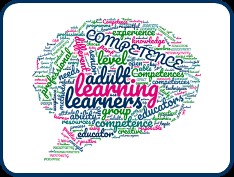
A7. Competence in DEALING WITH HETEROGENEITY AND DIVERSITY IN GROUPS: every group and every course will have a different group dynamics. It is inevitable and welcome! Therefore, an educator has to appreciate the positive, creative value of diversity and be able to understand different outcomes of group dynamics and methods of dealing with possible conflicts within the group. The attitude of being respectful, consistent and reliable will lead to a positive outcome.
On the level of EDUCATOR ACTIVITIES, the following main competences have been identified:
B1. ASSESSMENT: scope for assessment of prior experience, learning needs, demands, motivation and wishes of adult learners
B2. FACILITATION: ability to design and facilitate an adult learning process
B3. EVALUATION: competence to continuously monitor and evaluate the adult learning process in order to improve it
B4. MENTORING: ability to advise on career, life, further development and if necessary, the use of professional help
B5. CURRICULUM DESIGN: competence in designing and constructing study programmes
B6. COMPETENCE IN FACILITATING ICT-BASED LEARNING ENVIRONMENTS and support adult learning professionals and adult learners in using these learning environments. The level of context is related to the institutional environment where educators of adults work and may involve different issues such as:
Who are the learners and educators? How is the programme of learning developed? How is this institution organized? Is there a policy on continuing professional development? Etc.
You may want to read the whole report by going to this link:
Key Competences of Adult Learning Professionals; European study results
Seven principles of teaching learners 50+
How does the methodology of teaching the silver generation differ from teaching other adults and is there a need to speak about different teaching methods? In my view, what is needed, is adding another chapter to the growing field of knowledge about lifelong learning and ageing. This chapter could combine and contrast the present empirical and academic knowledge about andragogy and geragogy, suggesting some practical solutions.
Let’s look at the following seven principles of teaching older adults:
- Someone who is involved in teaching senior learners needs to upgrade regularly their knowledge about learning at a later stage in life, and especially regarding learners’ motivation, priorities, potential benefits for them and learning constraints.
- The second principle involves recognising and accepting the fact that the richness of silver learners’ experience has to be the prevailing attitude of an educator. This manifests itself in the methods, speed and content of programme delivery. Senior learners may have their own learning habits and different learning experiences; those who experienced a variety of input and forms of learning may be more open to new ideas and methods than someone who had very basic and traditional education. In fact, the latter may be the case for most mature learners. Only by staying positive and open to the diversity of their experience and emotions, can educators find the best solution.
-
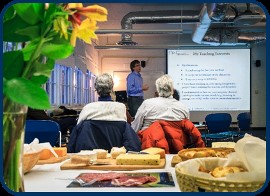
- The third principle - that of patience, active listening and empathy – is also very important when teaching senior learners. Someone who takes an interest in learners’ health and wellbeing issues and tries to notice what makes individual learners happy is sending a very positive message, which helps to sustain motivation.
- The fourth point is about the sequence and purpose of learning. Senior adults usually have well specified expectations as to what new skills they want to have, so the focus of the course should be on practice. The loop input - which starts with learning from experience, then assessing and drawing conclusions from this experience (getting feedback), practicing further until a skill can be used in practice – is a good example of moving from experimenting to practical application. Sometimes, a theoretical background may be necessary, but people of all ages learn more effectively when being able to practice. Educators also need to focus on communicating the practical outcomes of getting a new skill because tasks are more meaningful to learners if they know the purpose of each activity.
- The fifth principle refers to respectful communication and giving positive feedback. We know that the concept of a learning failure may be to overcome for senior learners. Therefore, one has to recognize the importance of giving positive feedback and reassurance when a task has been completed and celebrating success in achieving every small step. Educators need to be aware that their language is a very powerful tool in communication. It can bring self-esteem; it can motivate, praise and express appreciation more effectively than grades. The attitude of empathy is also very important in communicating feedback when a task has not been completed. Respectful communication can help to focus on what practical conclusions can be drawn from this experience and discussing steps towards positive achievement.
- The principle number six is about logic, clarity and personalization of materials. Many different types of activities, which are used in courses for adults, can be applied successfully when training senior learners. What matters here is the clarity of instructions and the layout of materials. Senior learners may have difficulty with visual clutter on a page, unclear handwriting on the board, fast and muffled speech, instructions appearing on the screen for a short period of time only etc. Therefore, lessons with senior adults require careful preparation and selection of materials, as well as good lesson planning.
- Finally, last but not least, peer-teaching is a very powerful technique of shifting the focus from educators to the learners. Peer-teaching is a highly effective method with senior learners as it is learner-centred, allows them to adjust the pace and content of learning to their needs and reduces the stress of underperforming. It also can involve senior learners teaching each other something about their own fields of expertise, which strengthens their self-esteem.
Teaching practices which motivate learners 50+
We tend to respect some rules if we know why they exist and how we may benefit from following them. Likewise, teaching in general, and teaching mature adults in particular, is not just about following some rules but, first and foremost, about understanding the motivation and psychological needs of silver learners.
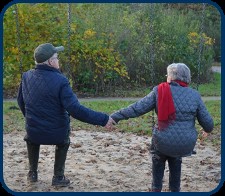
It has been said earlier that sustaining motivation to learn at a later stage in life relies on meeting at least three basic needs:
- I want to feel safe as a learner and know that what I’m learning is relevant
- I want to feel that I belong here
- I want to feel valued and respected
So how can educators reconcile these needs in practice? The truth is, every teaching or mentoring activity involves responding to learners’ needs and motivation. And if we start from here, practical ideas what to do and how to do it come naturally.
- Adult learners need to see a logical structure in the learning process. Their need for relevancy and safety can be addressed by educators on the level of:
- careful preparation
- planning manageable learning blocks in a logical order
- planning a variety of activities per session
- varying group interaction (work in pairs, groupwork, peer- learning, individual work)
- clear presentation of topics and tasks
- speaking clearly (some silver learners may have hearing difficulties)
- describing the aims and learning outcomes of each lesson
- going through tasks step-by-step and in a logical order
- moving from what is familiar to less known, from easier to more difficult
- including plenty of tasks for practice and revision of old and new material
- developing materials that are eye-friendly (larger font, visually attractive, high contrasts, uncluttered worksheets)
- giving priority to practice over theory
- using practical examples, metaphors and demonstrating rather than describing
- monitoring the lesson pace and allowing for staying longer on some tasks
- creating - if possible- the right physical conditions for the lesson – good light, comfortable chairs, enough space for putting paper and books and being able to speak from a position where everybody in the room can hear the teacher well
- Another need - to belong and be accepted - can be addressed on the level of providing feedback by:
- giving plenty of positive feedback and using the language of encouragement
- appreciating learners’ views, voices, involvement, input and expressing thanks
- accepting their ways of learning but also introducing new types of tasks having previously explained the reason for it
- respecting learners’ history of learning and habits and introducing new forms of learning
- evaluating tasks, not people
- introducing alternative methods of evaluation like self-assessment, peer-assessment; the majority of silver learners are discouraged and demotivated by taking tests
- providing opportunities for task-based learning
- rewarding and praising
- Finally, the need to feel respected for one’s experience and feeling confident can be fulfilled by communicating empathy:
- involving learners’ real and personal experience and positive emotions; for instance, if the topic is connected with places and google maps; ask them to describe the places they know from childhood and youth and find them on interactive maps; if they are learning about YouTube, ask them to find a song from youth they would like to sing etc.,
- involving all senses – VAK (visuals, music and movement) to help the process of memorization and use creative techniques
- involving all learners – it’s important that all of them should have an opportunity to speak and practice
- helping them see the practical aspect of what they have learnt
- showing the progress, they’ve made
Food for thought
If you are involved in running a course for senior learners, think of one of your “typical” or recent classes with them or the course as such. When the memory is clear in your mind, please try to answer the following questions:

- Did my students have a CHOICE in:
- choosing some aspects of the course / lesson?
- determining how they would achieve the goals?
- Did the techniques I used encourage learners to DISCOVER for themselves certain principles or rules? What rules did they discover?
- Were the students aware of the PURPOSE of the course / lesson? How do I know this?
- Did the course / lesson appeal to the GENUINE INTERESTS of learners? Was it RELEVANT for them? How do I know this?
- How would I rate my own ENTHUSIASM when presenting that lesson / course?
Further reading
Findsen, B., Formosa, M. ( ed) International Perspectives on Older Adult Education.Research, Policies and Practice, Springer, 2015
Istance, D. Seniors’ learning, European Journal of Education, 54,1,(9-12), 2019 Wiley Online Library
Tomczyk Ł, Edukacja osób starszych. Seniorzy w przestrzeni nowych mediów, Difin, Warszawa 2015
Useful links
Difficulties and rewards of teaching seniors Difficulties and rewards of teaching seniors
Language learning at a senior age language learning for 50+
Teaching Senior adults Teaching older adults
Four Steps – Teaching Young Learners
Anna Przybylo, PolandForeign Language Less Foreign for the Big and Small: An (Extended) Exercise in Cross-generational Functional-bilingual Education
Grzegorz Spiewak, PolandRole Playing Teaching: Dungeons, Dragons and EFL Classes
Monika Bigaj-Kisala, PolandSilver Learners - Teaching 50+. Elements of the Learning Process
Malgorzata Szwaj, Poland